Ultimate Red Tail Boa Care Sheet
October 18, 2020
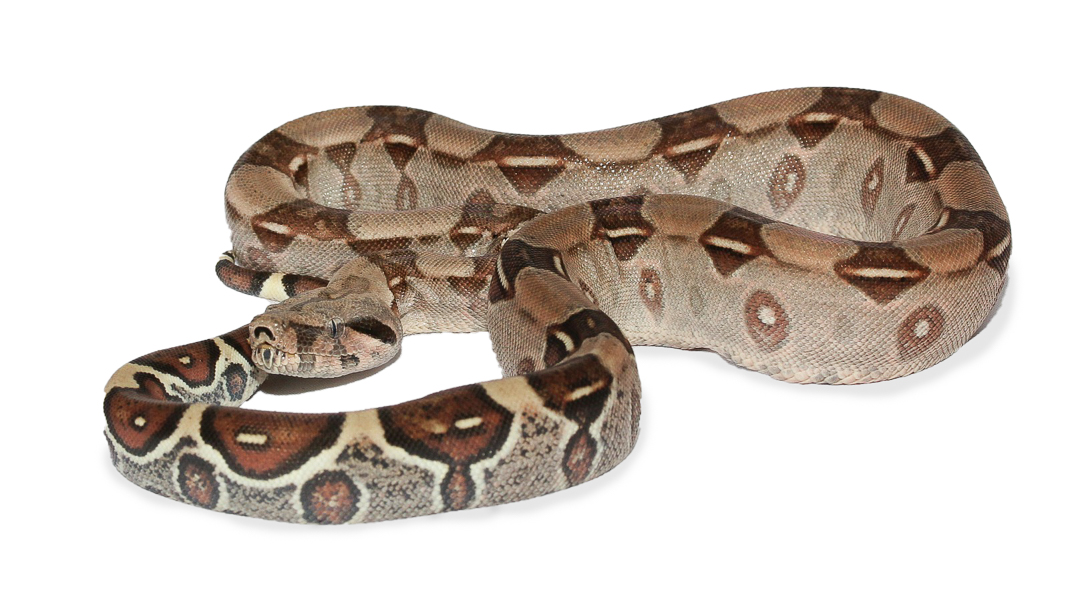
Table Of Contents
- Red Tail Boa Tank
- Red Tail Boa Substrate
- Red Tail Boa Temperature
- Red Tail Boa Lighting
- Red Tail Boa Humidity
- Red Tail Boa Feeding
- Red Tail Boa Supplies
- Handling Your Red Tail Boa
Columbian Red Tail Boa Care
In the wild, Red Tail Boas can be found in the rainforests of Central and South America. These semi-arboreal snakes can grow to be between 6-10 feet long and can weigh up to 50 pounds (females typically grow between 7-10 feet, and males grow between 6 - 8 feet). A Red Tail Boa’s lifespan can reach 30 years in captivity if properly cared for. Due to their strength, size, and care requirements, Red Tail Boas are considered to be intermediate/hard snakes, and therefore should be cared for by an experienced snake owner.
Red Tail Boa Tank
Your Red Tail Boa’s tank size should be determined by the size of your snake. The enclosure needs to be long enough for the snake to stretch out to its full length to allow their lungs to fully extend. A tank that has 8-10 square feet of surface area (e.x. a 4’ x 2’ tank would be 8 square feet) and is a couple of feet high would be good for an adult Red Tail Boa. However, baby Red Tail Boas can easily become stressed in a tank that big. This leaves you with two options: get a smaller enclosure for them until they grow into their adult size, or make them feel secure in the larger tank.
If you choose to go with the first option, a cheap alternative for a baby Red Tail Boa tank would be a bin or tub with a locking lid. These will hold humidity well while allowing your baby boa the privacy it needs to feel secure. Don’t forget to put some holes in the sides for air! You can do this by using a soldering iron or a hot poker, but be careful to make sure that the holes don’t have sharp edges, and that there’s no debris left behind from your tools.
If the tub option isn’t for you, don’t worry, it is easy to make a small snake feel secure in a larger tank. You will need to provide them with lots (I mean LOTS) of clutter and places to hide. For example, you would want three hides. One for the hot end, one for the cool end, and one in the middle. In between aThe Complete Corn Snake Care Sheetnd around these hides you will want to add plants, vines, climbing sticks, etc. As they grow you will need to slowly declutter the tank (still leaving a hide on both the warm end and the cool end, plus some plants and climbing sticks), giving them more room to move.
It is essential to have a locking lid and door on your Red Tail Boa’s tank, as they are strong snakes and excellent escape artists. Red Tail Boas need high humidity levels, and because of this, a pvc enclosure would be a good fit for them. I cannot stress this enough: you should only keep one Red Tail Boa to a tank (with the exception of breeding). When housed together, Red Tail Boas can become stressed easily, which can lead to other health problems. They have also been known to eat each other.
Red Tail Boa Substrate
Red Tail Boas are semi-arboreal, which means they love climbing, but also spend a lot of their time on the ground. They have even been known to burrow on occasion. Because of this it is important to have at least 2 inches of substrate for them to burrow in. Coconut husk and coconut fiber are both good choices for your Red Tail Boa’s substrate. These substrates hold humidity well, which is ideal for the snake. Stay away from aspen shavings. Yes, this can be an excellent substrate for many snakes, but Red Tail Boas are not one of them. Aspen is dusty and tends to mold when exposed to high humidity.
I strongly discourage the use of paper towels or reptile carpet. They will not only prevent your Red Tail Boa from burrowing, but also won't hold enough humidity for them. Stay away from sand as it can cause impaction if ingested. You should also never use pine or cedar for your Red Tail Boa’s substrate because they can cause respiratory issues that can sometimes lead to death. Regardless of what kind of substrate you choose, it is important to remember to spot clean the tank daily. Leaving waste in a warm enclosure will quickly cause bacteria growth, which can lead to a serious infection in your snake.
Red Tail Boa Temperature
Your Red Tail Boa’s tank should have both a cool side and a hot side. The temperature on the cool side should stay around 85°F, and the temperature on the hot side should stay around 95°F. You will need to purchase 2 thermometers; one to read the cool end, and one to read the hot end. You don't necessarily have to purchase a temp gun, however I recommend one as they allow you to get a more accurate reading of the temperature in specific parts of the tank. Yes they are a little expensive, but it will be worth it in the long run, especially for the dedicated hobbyist. Another must have is a thermostat. Thermostats regulate the temperature in your boa constrictors enclosure to prevent them from overheating or gettign burned.
In their natural environment, a Red Tail Boa’s heat source would obviously be the sun. Because they naturally get their heat from above them, you will need a heat lamp (which will double as your lighting). I strongly discourage the use of hot rocks because they have been known to get too hot and severely burn reptiles. Instead, you can purchase a hide with a flat top. The top of the hide will become warm with the lamp shining on it and will provide a good place for your Red Tail Boa to lay out on (be sure to put your hand on it every couple days to make sure it doesn't get too hot). You can try a heat mat as well, though it may be ineffective under a thick layer of substrate. Another option would be a ceramic heat emitter. These will put off heat without the light, and therefore would be perfect for heating the tank at night. If you choose to go this route you will need to purchase a lighting source to pair with it such as UVB.
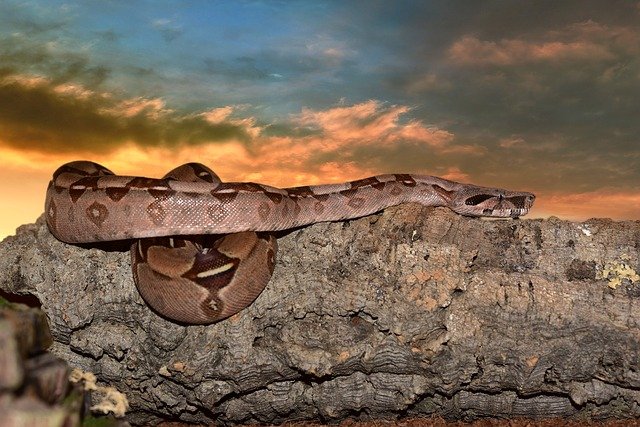
Red Tail Boa Lighting
It is essential for you to provide a day and night cycle in captivity, just as your Red Tail Boa would have in their natural habitat. 13 hours of light and 11 hours of darkness will regulate your snake's natural wake and sleep cycle. You can purchase a timer to hook to your snake lights so that they will turn on and off at set times, saving yourself the trouble of having to do so. I use a timer for all of my reptile enclosures. They can be extremely overpriced in pet stores, but you can find them on Amazon for pretty cheap. It is also a good idea to open the blinds and let some natural light in as well, however, make sure the light isn't shining directly into the tank as the temperatures can quickly rise, becoming lethal. Pet stores will try to tell you that you need a night light, but that's false information, and they're just trying to get your money. Red night bulbs (or colored bulbs in general) can actually disturb your Red Tail Boas cycle and create unnecessary stress.
Does my Red Tail Boa need a UVB bulb?
The short answer is no. Your Red Tail Boa will be perfectly fine if you choose to not supply them with a UVB bulb. However, there are several benefits to using one, including making your snake more active and improving their immune system. I would recommend shelling out the few extra dollars and using one.
Red Tail Boa Humidity
As previously stated, a Red Tail Boa’s natural habitat is in the rainforests of Central and South America. Because they come from such a humid environment, it is important to provide them with the same humidity in captivity. Your Red Tail Boa’s humidity levels should stay between 60 - 70%. You will need to purchase a hygrometer to monitor these levels. To keep your snake’s humidity in the right range, you should mist the enclosure once a day, or as needed. You can also place their water dish on the warm end of the tank, which will cause more evaporation, bringing the humidity up. Moss doubles as good scenery and a humidity holder, so I recommend decorating the cool end of your Red Tail Boa’s tank with moss (I’ll go over this a little more in the “Decorating Your Snake’s Tank” section). I would not recommend putting a humidifier or mister into your snake's enclosure. These are not only pricy, but they can work a little too well, causing the tank to become too humid. Automatic misters can quickly lead to scale rot and respritory infections.
PVC snake enclosures tend to hold humidity much better than glass tanks like aquariums, but that doesn't mean you can't use an aquarium, it just means it will be more difficult. If you're planning on using an aquarium setup I would recommend covering 1/3 of the screen lid with tin foil or plastic wrap to keep the humidity in. A damp towel covering 1/3 of the lid is even more efficient, however, damp towels can harbor bacteria and should be changed out and washed often. Make sure the enclosure isn’t too wet though, having too high of humidity can cause respiratory issues. The substrate also shouldn't be wet to the touch, as laying on a damp or wet substrate can cause scale rot.
Red Tail Boa Feeding
In the wild, Red Tail Boas eat a variety of amphibians, birds, rodents, and other snakes. In captivity, a Red Tail Boa’s diet mainly consists of mice, rats, and rabbits. Baby Red Tail Boas eat fuzzies, mice, and rats. Adult Red Tail Boas eat large rats and rabbits. Hatchlings should be fed every 5 days, and adults should be fed every 10 days. Always make sure that the prey you are offering your snake is no more than 1.5 times the size of your snake at the widest point.
Should I Feed Live or Frozen Thawed?
You should try to feed your snake frozen thawed. This is safer for your snake because it eliminates the risk of injury or disease (such as salmonella) from the mouse or rat. Some red tail boa constrictors are picky though and will refuse to eat frozen thawed. If this happens you should feed your snake live because a live meal is better than no meal. If you feed live be sure to watch the whole interaction. You should NEVER leave a live rodent alone with your snake because the mouse or rat could potentially seriously injure your snake. Be sure to have a pair of feeding tongs on hand to restrain the mouse if necessary.
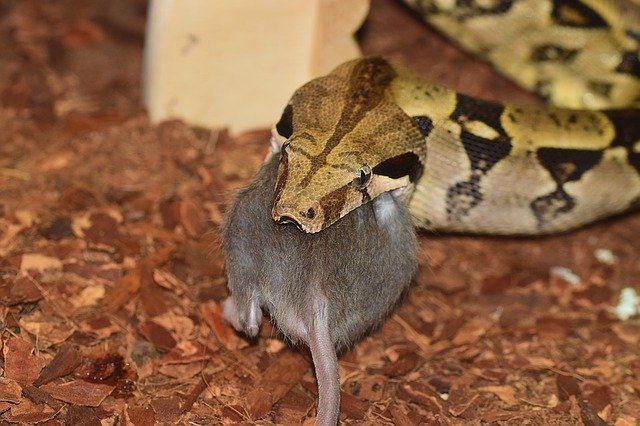
Red Tail Boa Supplies
Hides
It is essential for your Red Tail Boa to feel secure. To provide security for your boa, you will need multiple hides — one on the warm side and one on the cool side. The reason it is so important to provide them with a secure place to hide on both sides is so that they will feel comfortable moving between temperature gradients as they need to. You wouldn't want your Red Tail Boa to regurgitate because they didn't feel secure on the warm side of the tank and stayed too cool to digest properly. When picking out your hides try to pick one that is large enough for your snake to comfortably curl up in, but small enough so that they’re touching all sides, or they may not feel comfortable using it. Snakes really like to be able to curl up in dark closed up spaces — it makes them feel safe.
The bigger the snake, the harder it can become to find suitable hides. That being said there are ways to make hides suitable. One way is to use a half log, building substrate around and under it. Half logs usually aren't heavy enough to worry about crushing your snake, so you can build substrate up underneath the bottom edges of the hide to lift it, and dig a tunnel under it. Then, place substrate on top and behind the log to close it in, and decorate with moss hanging down the front and on top. This is both aesthetically pleasing and provides security for your Red Tail Boa.
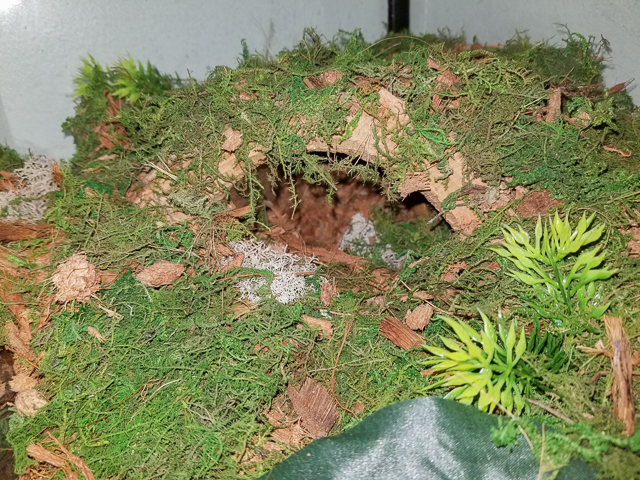
Water
Water is essential for any living creature - and snakes are no different. When it comes to picking out a water dish for your Red Tail Boa, it is important to get one big enough for them to curl up in. Sometimes during shed your snake may want to soak. I recommend purchasing a ceramic dish. These kinds of dishes are heavy so your Red Tail Boa can't accidentally spill water everywhere, and are dishwasher safe for easy cleaning. This is the exact dish I use. Make sure your snake's water dish is completely flush with the bottom of the enclosure. This prevents your snake from burrowing underneath it and getting crushed. It is important to change your snake’s water every three days, and to change immediately if your snake soils the water.
Decorating Your Snake's Tank
Red Tail Boas love to climb, so when you’re picking out decor for your new snake’s tank, look for some strong branches. Adding things for your Red Tail Boa to slither over adds enrichment to your snake’s life. It will also encourage exercise which will help to keep your snake from becoming overweight. Hanging plants and vines are a good addition as well. These will also provide your snake with enrichment, as well as giving the enclosure a more natural feel. Moss is always a good addition to an enclosure. It’s pretty, gives your snake something natural to smell, and helps to hold in humidity. On top of that, there are lots of different kinds of moss to choose from, so you can add a variety to your enclosure.
Having plants, rocks, and branches in your Red Tail Boa’s enclosure will give your snake coverage and security, but I recommend going a step farther and blacking out the walls. You can cheaply do this with dark colored construction paper, but that looks a little plain. For about $25 you can order backgrounds fit to your enclosure (prices will vary depending on the dimensions of your enclosure) that have pictures of rock walls and forest scenery. There are even 3D backgrounds that your snakes can climb on to maximize space and increase enrichment, but those can be quite pricey. A step above all of that would be to provide your snake with a fully bioactive enclosure with a handmade background full of live plants.
Handling Your Red Tail Boa
Red Tail Boas are big, strong snakes so it is essential for you to know how to safely handle them to prevent you and the snake from getting hurt. Hold your snake securely by supporting both behind their head and the middle of their body. Do not hold them by just their tails, as this can lead to spine injuries. Always sanitize your hands before handling them. This will prevent your hands from smelling like rats (which will lower the risk of your getting bit) and will prevent the spread of germs or parasites from you to your snake. To keep your Red Tail Boa tame and used to being handled, you should make an effort to hold them once or twice a week, but not everyday or you will give them unnecessary stress. It is a good idea to gently run something such as a snake hook (or even a paper tower roll) down their bodies before picking them up. By doing this every time you remove them from their enclosure, you're allowing them to associate being touched with handling time, rather than feeding time (especially if you choose to feed them in their enclosure). This will lower the chance of you getting bit. While we're on the subject of snake bites, it is important for you to remain calm if your Red Tail Boa bites you. Never yank away from a bite because you can pull the snake’s fangs out, which can lead to gum infections. Instead, simply pour some cool water on your snake’s face, and this will cause your snake to let go. Because there is always a risk of being bit and coiled, I would recommend having someone else home when handling a snake of this size and strength.
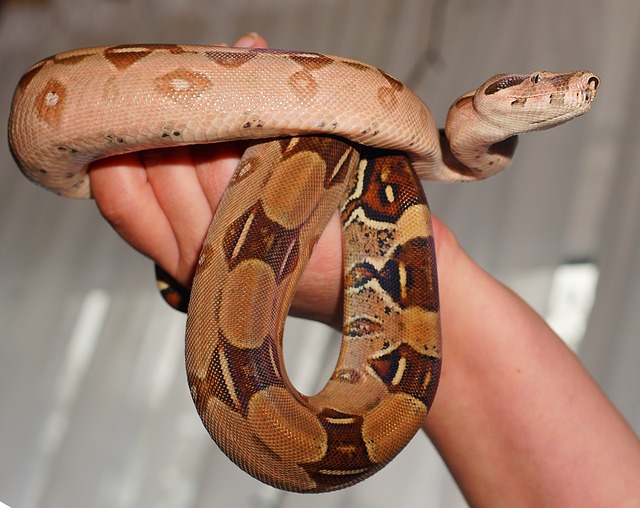
This post contains affiliate links that may pay me a commission when a sale is made. Affiliate commissions help me maintain this website, and I only recommend products that I trust.

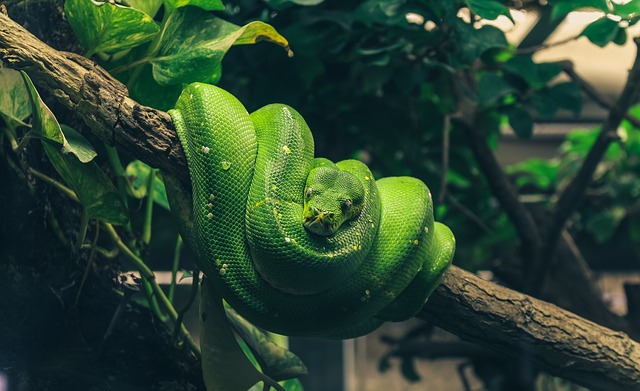
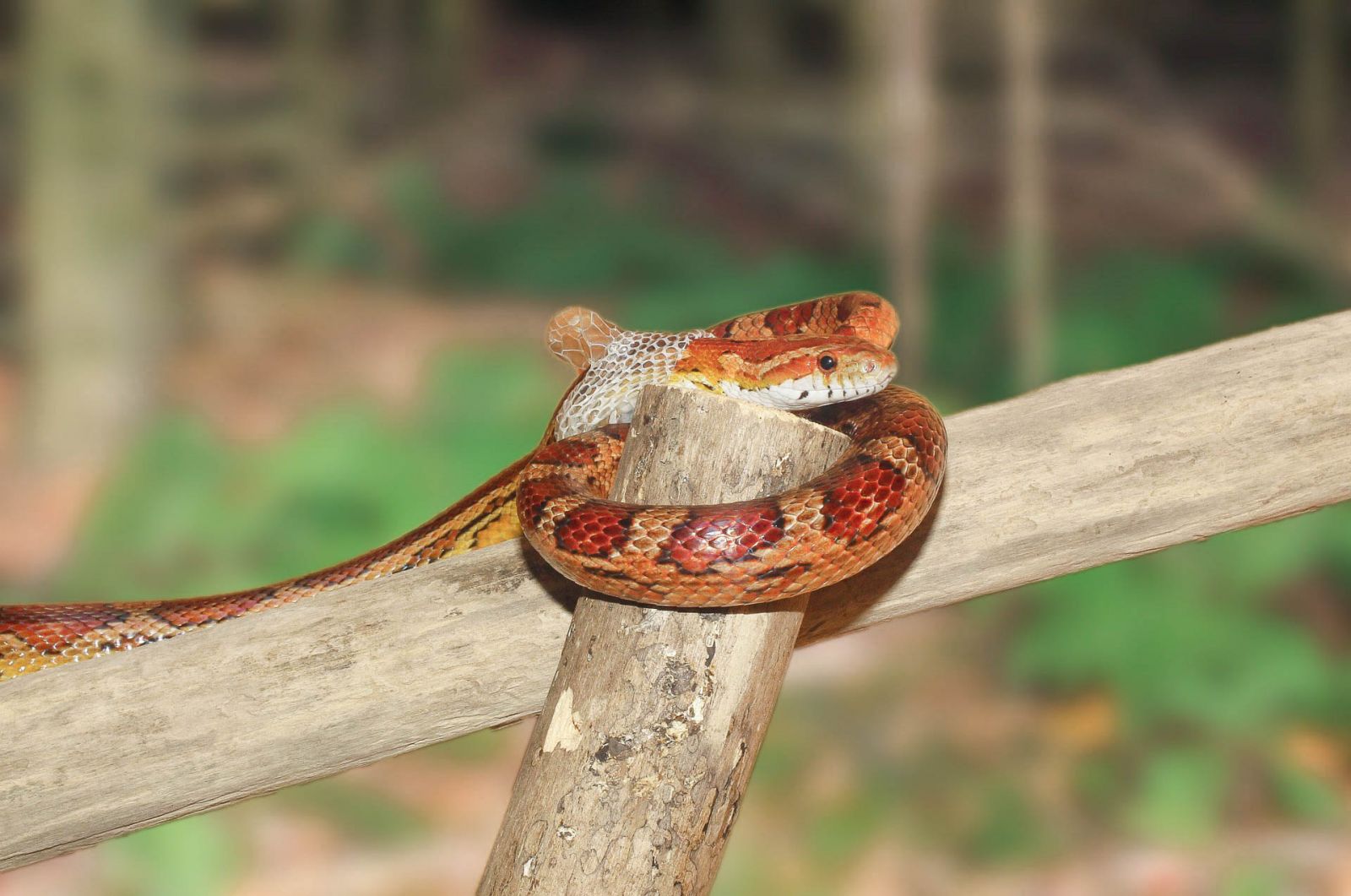



Sending...